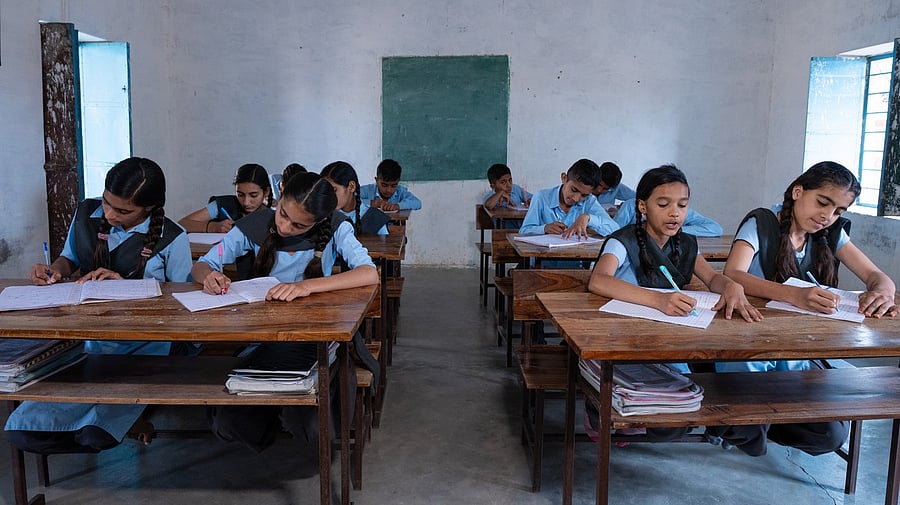
Image showing children at a school. For representational purposes.
Credit: iStock Photo
Recent research on the arithmetical abilities of children in the classroom and children selling vegetables in the market has shed useful light on the gap between formal and informal education. It may help in bridging the gap between the two forms of education, both of which are important. A study co-authored by Nobel laureates Abhijit Banerjee and Esther Duflo has shown that children in the market are good at calculating prices and returning the balance even when odd amounts are involved. The same working children were poor in arithmetic in the classroom. Even when they spent part of the day in the classroom and part of it in the market, they found it difficult to do the sums in the abstract form. They did the same arithmetic correctly in the market without paper and pencil. Conversely, non-working children who were good in the classroom could not do the sums outside, and in the market. What it shows is that learning is influenced by the method of learning, the environment, and perhaps the felt need to learn.
There are many studies on the numeracy and literacy deficiencies of children in school. Children, especially from weaker backgrounds, are often found unable to cope with the learning demands in the classroom. The Annual Status of Education Reports (ASER) always talks about the inability of children of higher classes to do the calculations and text reading they are taught at lower classes. What it shows is the gap between abstract and practical arithmetic, between theory and life skills, a natural environment and a created space, and between a felt life need and an exercise whose use the child is not fully aware of. The best education strategies would try to bridge the gap, take the classroom to the market and the market to the classroom.
In a wider sense, it reflects the gap between intuition and knowledge, participation and observation, and experience and concept that is at the heart of understanding. Every skill and gift has in it a dissociation between the two modes. Singing is an incomplete rendering of the music in the being, and all human knowledge is an approximation of experience. We understand the world through experience, and explanation comes later. The child in the market experiences the world in numbers. It is explained to the child in the classroom. Basically no child is taught an idea or skill by the teacher. The teacher only helps the child to discover what is within. In the market, the child discovers it herself. This is the basic idea of learning and human understanding, and it should guide teaching. The study underlines its truth.
